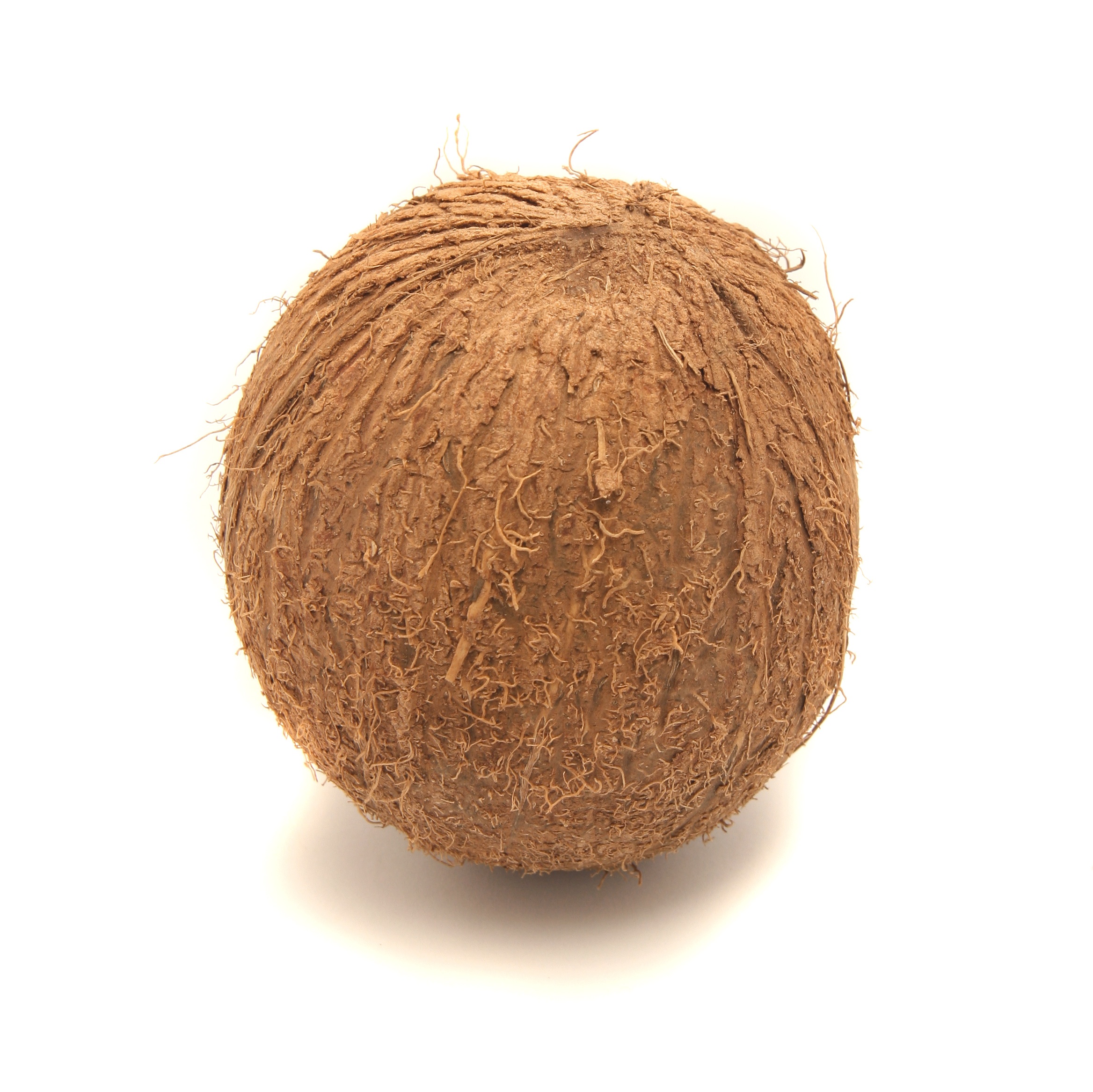Knowledge about the use of coconut was passed between generations of families as well as through traders traveling coast to coast in the islands of Polynesia, Philippines, and Sri Lanka.
The coconut tree was to these populations like the buffalo was to the Native Americans in North America. They used every part of the tree for food, shelter, weaponry, boats, medicine, religious rituals, and more. The tree became known culturally as the “Tree of Life”.
Today, populations in Sri Lanka, Polynesia, Philippines, Indonesia, and New Guinea consume as much as 63% of their energy from coconut and its oil (1; 2; 3; 4; 5; 6).
Cardiovascular disease is low in these regions compared to more developed countries where the intake of dietary saturated fats has been associated with high cholesterol and cardiovascular mortality (2; 7; 8; 9). The association between dietary saturated fat and coronary heart disease has been controversial, with reports consistently showing correlations (7; 10), but evidence linking dietary saturated fat and mortality has been less clear (10; 11, 12, 13, 14, 15; 16; 17; 18).
Total dietary fat and saturated fat may have a protective relationship with stroke (19; 20). Coconut oil has been shown in other reports to have little to no effect on total cholesterol, and also improve total cholesterol (TC): high-density lipoprotein (HDL) (21, 22). Lauric acid, the primary saturated fatty acid found in coconut oil has been proven to decrease TC: HDL more so than other fatty acids studied (23).
While both animal and human studies have failed to find a definitive relationship between coconut oil, saturated fats, and abnormal lipids, the research suggests that the studies linking coconut oil and high lipids used hydrogenated sources of coconut oil, which may be associated with a relative deficiency in essential fatty acids (6; 11; 24).
Coconut oil is naturally low in essential fatty acids; a diet high in coconut oil is associated with an inherent decrease in the intake of essential fatty acids assuming that total fat intake stays the same. Some studies may have also used coconut oil intakes that are unlikely to be consumed (21; 22; 25). Additionally, a 1994 Lancet study demonstrated that the fatty acid composition of plaque associated with arteriosclerosis is mostly comprised of unsaturated fat (26)
The prevalence of cardiovascular diseases is rising in Sri Lanka and India (1; 27; 28), but a 1998 review in the Journal of the Indian Medical Association suggests that the increase may be due to a recent dietary transition from ghee, coconut oil, and mustard oil to polyunsaturated fats such as corn, sunflower, or safflower oils (12).
It is estimated that while total fat intake has remained the same in Sri Lanka, intake of fat from coconut decreased by 25-30%; deaths from cardiovascular disease increased during this period (29). A similar transition is occurring in Indonesia, yet a correlation between dietary coconut and heart disease has not been reported (30).
While controversy continues on the link between saturated fats, coconut-derived or otherwise, and heart disease, the effect of lifestyle factors such as intake of refined carbohydrates (31), smoking, and obesity may be more harmful (13; 32; 33)
Coconut Oil:
Coconut oil is derived from the pressed seed of the coconut known as the copra. Some studies have found a correlation between coconut oil consumption and elevated cholesterol (21; 25), but further study has failed to find an association between consumption of coconut oil and a higher incidence of cardiovascular disease (6).
Coconut oil is comprised of 87-92% saturated fatty acids (34). Saturated fats are subclassified as short (2-6 carbons), medium (8-12 carbons), and long chain (14+ carbons). Each classification has unique metabolic effects from one another similar to the unique sub-classifications of unsaturated fatty acids (polyunsaturated, monounsaturated, omega 3 fatty acids, omega 6 fatty acids).
Trans fatty acids occur in just trace amounts in coconut oil, if at all (2; 4).
The unique metabolic effects of coconut oil may be due to the predominance of saturated medium chain fatty acids (MCFAs) in its composition (1; 9; 11)… Medium-chain saturated fatty acids comprise the saturated triglycerides caprylic acid (8 carbons), capric acid (10 carbons) and lauric acid (12 carbons). Some authors also classify myristic acid (14 carbons) as a MCFA as it shares properties with both medium and long-chain triglycerides.
As introduced earlier, although the medium chain triglycerides (MCTs) found in coconut oil have been demonstrated to raise cholesterol in a handful of studies; the association is believed to be more due to a reduced intake of essential fatty acids rather than an increased intake of MCTs (35; 36). Coconut oil improves the ratios of low-density lipoprotein (LDL): high-density lipoprotein (HDL) and total cholesterol (TC): HDL as the lipid-raising effect is more pronounced for HDLs than for LDLs and TC ( 6; 22; 23).
Intake of Coconut Oil:
In 1985 and the early 1990’s, tropical oil (coconut oil, palm oil) intake was estimated to be <2% of total energy and <4% of total fat intake (34; 37). By the mid-1990’s, intake was estimated to be <1tsp (38).
In Sri Lanka, coconut fats represent 80% of total fat intake (1). “High” coconut oil intake in other countries may only vary from 1-2 Tbsp per day (2, 27).
The Pukapuka and Tokelau of the Polynesian Islands have the highest reported intake of coconut which comprises 34-63% of total energy percentage. Despite the high intake of saturated fat, vascular disease is uncommon in these populations (4).
Metabolism of Coconut Oil Saturated Fats:
Saturated fats make up 35% of total fat intake in the US (39). Intakes were believed to remain the same between 1909 and 2000, but between 1995-2005, intake levels declined (40). From 1960 to 2000, the intake of polyunsaturated fats increased significantly (41). As intake of MCFAs is relatively low in the US diet, intake of long-chain saturated fatty acids (LCFAs) predominates total intake of saturated fat.
Short-chain fatty acids (SCFAs) and MCFAs in coconut oil are metabolized differently from LCFAs found in beef and dairy.
SCFAs and MCFAs are absorbed into the portal vein where they are metabolized in the liver for energy at less calories per gram than LCFAs (1; 6; 42). Unlike LCFAs, SCFAs and MCFAs do not need to be transported through the lymphatic system by chylomicrons. They do not require carnitine for transport into the cell, and do not require bile acids to be absorbed ( 6; 42; 43; 44). MCFAs are also burned for energy as fast as glucose (45).
MCFAs have thermogenic properties that may help support energy utilization and fat oxidation (46; 47, 48). In addition to the thermogenic increase in calorie burning, MCFAs may induce greater satiety after eating and help maintain a healthy weight when compared to other saturated fatty acids (44, 46; 49). Improvements in body composition have been reported in men, while there are mixed results for women (47; 50). Increased body weight is a risk factor for heart disease.
As medium chain triglycerides found in coconut oil are metabolized to energy in the form of ketones – coconut oil is an excellent source of non-glucose energy, which may also offer heart-protective properties, especially in the brain where capillary beds can be especially sensitive to unhealthy levels of glucose.
Despite the unique differences in metabolism for SCFAs, MCFAs, and LCFAs, the AHA, USDA, and ADA (AND) recommend diets low in all saturated fats (<7-10% saturated fat) to reduce the incidence of cardiovascular disease (51; 52; 53).
When I want to leverage the unique benefits of MCTs, I use MCT Wellness Oil which focuses on caprylic acid and added butyrate (Sunbutyrate form). It supports ketones, while also offering antimicrobial properties, particularly against unwanted yeast/fungal growth. It’s a great daily metabolic aid that I use to support cognition too in addition to my waistline.
Cardiovascular Benefits of Coconut Oil:
Coconut or MCT oil may help lower lipids (54), oxidized LDLs (55), fat deposition (56), triglycerides (43), and inflammation (57) while raising HDLs (58).
Research also suggests positive changes in levels of clotting factors and lp(a) (59) – other important risk factors for heart disease.
As discussed earlier, due to improvements in total cholesterol: HDL as well as HDL, consumption of coconut oil and/or medium chain triglycerides may yield a net protective effect on the overall risk of heart disease despite potential increases in total cholesterol and total LDL.
Coronary heart disease has also been associated with low-grade bacterial and viral infections such as Chlamydia pneumoniae and cytomegalovirus (CMV) (60, 61).
Coconut oil and/or MCFA’s may have anti-viral (62), anti-fungal, anti-bacterial (63, 64, 65, 66), and anti-candida (67, 68) properties including against Chlamydia spp. and CMV. Certain triglycerides found in coconut oil and their corresponding monoglycerides are likely responsible for their antimicrobial properties, particularly the 12-carbon chains lauric acid and monolaurin respectively (69; 70).
Antibiotic resistance is an increasing worldwide concern for treating infections caused by a wide variety of organisms Demand for safe, alternative options such as monolaurin is increasing.
Anti-viral treatments are limited for the majority of viruses infecting humans (71). Viral resistance also exists such as acyclovir-resistant Herpes simplex virus type 1 (HSV-1) (72).
Lauric acid, capric acid, and caprylic acid found in coconut oil demonstrate antimicrobial activity in vitro (71). Dr. Jon J. Kabara, Ph.D. discovered that it is the corresponding monoglycerides such as monolaurin that have potent anti-microbial activity in vivo, not the diglycerides and triglycerides (70). Dr. Kabara found that no more than 3% of the lauric acid in coconut fat is converted to monolaurin (73). In response, he developed pure monolaurin as a dietary supplement.
When I use monolaurin, I use UltraLaurin by Inspired Nutrition.
How Much Coconut Oil Should I Consume for Heart Health?
Coconut oil experts recommend that you consume as much as three tablespoons of coconut oil per day to support general health and wellness. I generally recommend 1-2 tablespoons per day as part of cooking and/or taken supplementally. Once you increase beyond 2 tablespoons per day, coconut oil may trigger a natural laxative effect – so be mindful of high intake, and if loose stools occur, back down.
Related Articles:




